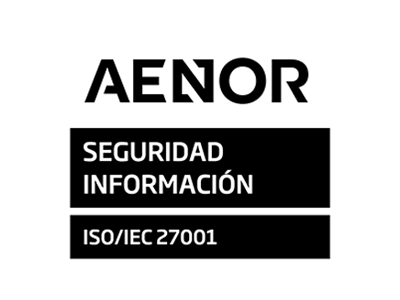Navigating the Journey of AI Adoption: The Essential Role of Strategic Partnerships
8th March 2024

Are you ready to catapult your business into the future? AI adoption isn’t just an option; it’s the battleground where strategic partnerships forge empires.
For businesses aspiring to leverage AI, the complexity of the technology, coupled with the need for significant investment and specialized expertise, can be daunting. It’s within this context that strategic partnerships emerge as a vital catalyst for success. These alliances offer more than just a pathway to overcoming technological hurdles; they provide a collaborative framework that can amplify innovation, accelerate development, and unlock new avenues for growth.
In this blog post, we’ll discuss how business leaders through the pivotal role strategic partnerships play in navigating the intricacies of AI adoption, highlighting how these collaborations are not just beneficial but essential for harnessing the full potential of AI.
Understanding the Ecosystem: The Foundation of Strategic Partnerships
The AI ecosystem is a vibrant tapestry of technology providers, research institutions, startups, and industry adopters, each playing a crucial role in the development and application of AI. For businesses, understanding this ecosystem is the first step toward identifying strategic partnerships that can drive AI adoption. This understanding enables companies to:
- Recognize the technological gaps and resources needed for AI integration.
- Identify potential partners with complementary strengths and capabilities.
- Foster innovation by collaborating with entities across different segments of the ecosystem.
Engaging with the ecosystem allows businesses to map out where their AI ambitions align with the capabilities of potential partners, ensuring that strategic alliances are both impactful and sustainable. Through this collaborative lens, companies can leverage the collective expertise and resources of the ecosystem to accelerate their AI initiatives, mitigate risks, and navigate the competitive landscape more effectively.
Understanding the Technology Behind Virtual Agents
Imagine your virtual agent as a savvy intern who’s always on the ball, learning from every interaction to become the MVP of your team.
Here’s how they pull off their impressive stunts:
1. Adaptive Learning: Just like a human, a virtual agent uses AI algorithms to learn from every chat, every question, and every problem it solves. This isn’t just about getting smarter; it’s about becoming more efficient and reducing those pesky overhead costs for your business.
2. Continuous Improvement: Every conversation is a lesson for virtual agents. They’re not stuck with what they know; they evolve. By harnessing the power of natural language processing and machine learning, these digital wizards are in a league of their own, outperforming chatbots that can’t quite keep up.
3. Designing the Conversation: To ensure virtual agents don’t sound like robots, dialog designers and UX specialists work their magic with NLP and machine learning. It’s a bit like writing a script for a play, only the actors are AI, and the stage is your screen. The goal? To make every your customers feel like they’re chatting with an understanding and empathetic friend.
4. Intelligent Interactions: A successful virtual agent doesn’t just understand what your customers are asking; it understands why they’re asking it. With the help of AI and NLP, these virtual chatbots become more intelligent over time, learning to provide quick resolutions that feel tailor-made for your needs. They’re like a friendly barista who remembers your order.
5. Multichannel Communication: Whether you’re typing away on a messaging app, browsing a website, or using a mobile app, virtual agents are ready to chat. They’re multilingual in the language of tech, understanding natural language, interpreting your requests, and providing helpful responses that hit the mark.
Why Strategic Partnerships Matter in AI Adoption
The adoption of AI technology presents a unique set of challenges that require more than just financial investment. It demands a comprehensive approach that encompasses technical expertise, market insights, and innovative capabilities. Strategic partnerships are essential in this regard for several reasons:
- Accelerating Development: By combining resources and expertise, partnerships can significantly speed up the development and implementation of AI solutions.
- Reducing Costs and Risks: Collaborating with partners allows businesses to share the financial and operational risks associated with AI projects.
- Accessing Specialized Talent: Partnerships provide access to a pool of specialized talent and expertise, which is crucial for overcoming the technical challenges of AI.
- Enhancing Innovation: The collaborative nature of partnerships fosters a culture of innovation, enabling the development of groundbreaking AI applications.
In essence, strategic partnerships not only make the journey toward AI adoption more manageable but also more effective, allowing businesses to leverage AI’s transformative potential fully.
Key Components of a Successful Strategic Partnership
For a strategic partnership to thrive, especially in the complex realm of AI, it must be built on a foundation of mutual benefit and shared goals. The following components are crucial:
- Alignment of Vision and Objectives: Partners must share a common vision for their AI initiatives, ensuring that all efforts are directed towards achieving mutual goals.
- Complementary Strengths: A successful partnership brings together organizations with complementary skills, resources, and expertise, enhancing the partnership’s overall capability to tackle AI challenges.
- Commitment to Innovation: Both partners should be committed to exploring and investing in new ideas, approaches, and technologies, fostering an environment where innovation can thrive.
- Effective Communication and Trust: Open and transparent communication is essential for navigating the complexities of AI projects, while trust builds the foundation for a resilient partnership.
These components ensure that strategic partnerships are not only formed but are also capable of sustaining the dynamic and challenging journey of AI adoption.
Identifying the Right Strategic Partners for AI Innovation
Choosing the right strategic partner is a critical decision that can significantly impact the success of AI initiatives. To identify suitable partners, businesses should:
- Conduct a thorough assessment of their AI goals and the specific capabilities needed to achieve these goals.
- Research potential partners, evaluating their technological expertise, market reputation, and alignment with the business’s strategic objectives.
- Consider the cultural fit, ensuring that the potential partner shares similar values and a commitment to innovation.
- Clearly define success metrics and expectations from the outset to ensure that both parties are aligned in their objectives and outcomes.
This careful selection process ensures that the chosen partnership will be productive, mutually beneficial, and geared towards achieving significant advancements in AI.
Overcoming Barriers to AI Adoption through Collaboration
Strategic partnerships play a crucial role in overcoming the barriers to AI adoption, which include technical complexity, high costs, and a shortage of skilled personnel. Through collaboration, businesses can:
- Leverage Combined Expertise: Partnerships bring together diverse expertise, allowing for more effective problem-solving and innovation.
- Share Resources and Risks: By sharing the financial and operational risks of AI projects, partners can undertake more ambitious initiatives with reduced individual exposure.
- Access to Specialized Talent: Partnerships provide access to a wider talent pool, helping to alleviate the challenge of finding and retaining skilled AI professionals.
This collaborative approach not only mitigates the barriers to AI adoption but also accelerates the pace at which businesses can effectively integrate AI technologies into their operations.
The Synergy of Collaboration in AI Development
The synergy created through strategic partnerships often leads to outcomes that far exceed what individual entities could achieve on their own. This synergy is a product of combining different perspectives, expertise, and resources, leading to enhanced creativity, innovation, and efficiency in AI development. Examples of successful collaborations abound, where partners have jointly developed AI solutions that address complex challenges, opened up new markets, and created significant competitive advantages. This collective effort underscores the transformative potential of strategic partnerships in driving the adoption and advancement of AI technologies.
By fostering collaboration, sharing risks, and combining strengths, these partnerships amplify the potential of AI, driving innovation and transformation across industries. For business leaders looking to harness AI’s power, the path forward is clear: embracing strategic partnerships is not just a strategy for overcoming obstacles; it’s a catalyst for achieving a competitive edge in the digital age. Through these alliances, businesses can unlock the full potential of AI, paving the way for a future where technology and human ingenuity converge to create unprecedented value and opportunities.
Don’t miss out on our weekly blog posts and LinkedIn updates about the fascinating advancements that will propel your business.
Ready to see what we can do for you?
In the right hands, artificial intelligence can take human performance to a hitherto unimaginable level. Are you ready for evolution?




